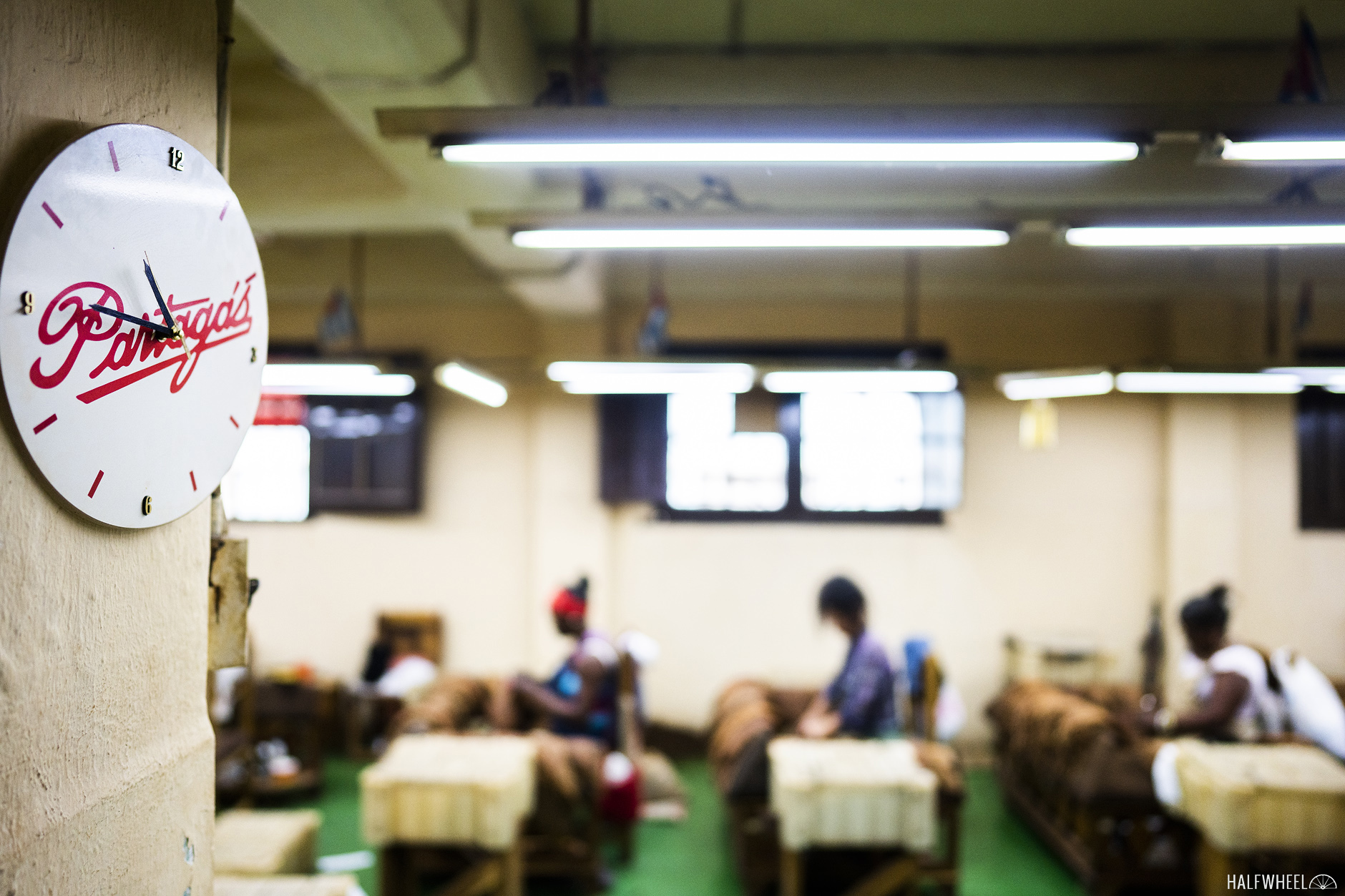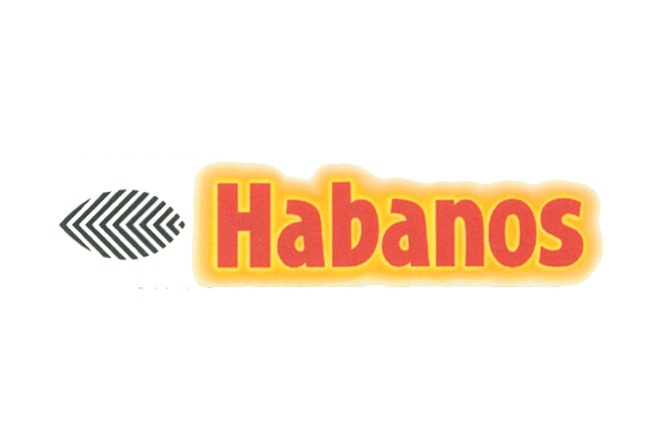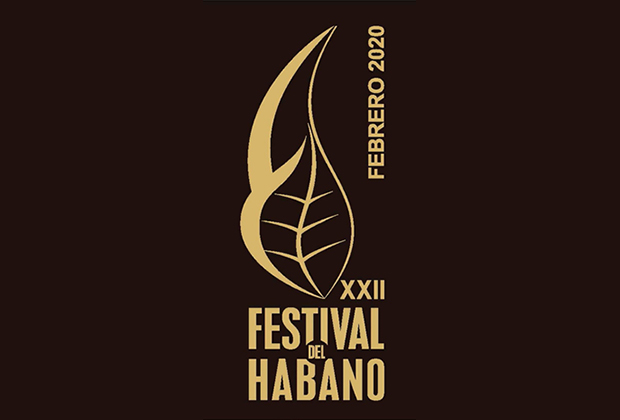As has been the case for the past five years, the fourth day of the Festival del Habano was reserved for one major event: visiting cigar factories located in Havana, albeit split into two different outings. However, while one of the factories we visited was extremely familiar, the other turned out to be one that I had never visited before.
In true Groundhog Day fashion, my day started early, with me waking up around 5:30 a.m. to try and get as much work done as possible before things began moving full force. About two hours later, I scarfed down some breakfast before hopping into a taxi and making my way to the first factory on the schedule: La Corona.
This building was originally named La Casa de Hierro; La Corona has been located in a number of different buildings—including one of the most famous structures in Cuba due to its frame made of iron and steel that was a technological marvel during its day—before finally stopping at the current location. While a number of different brands like Ramón Allones, Punch, Hoyo de Monterrey, Por Larrañaga and Diplomáticos are rolled at La Corona, the factory is perhaps most well-known as the home of the Romeo y Julieta marca, and with Habanos S.A. debuting the new Romeo y Julieta Linea Oro line at the Festival this year it was no surprise to see it on the schedule.
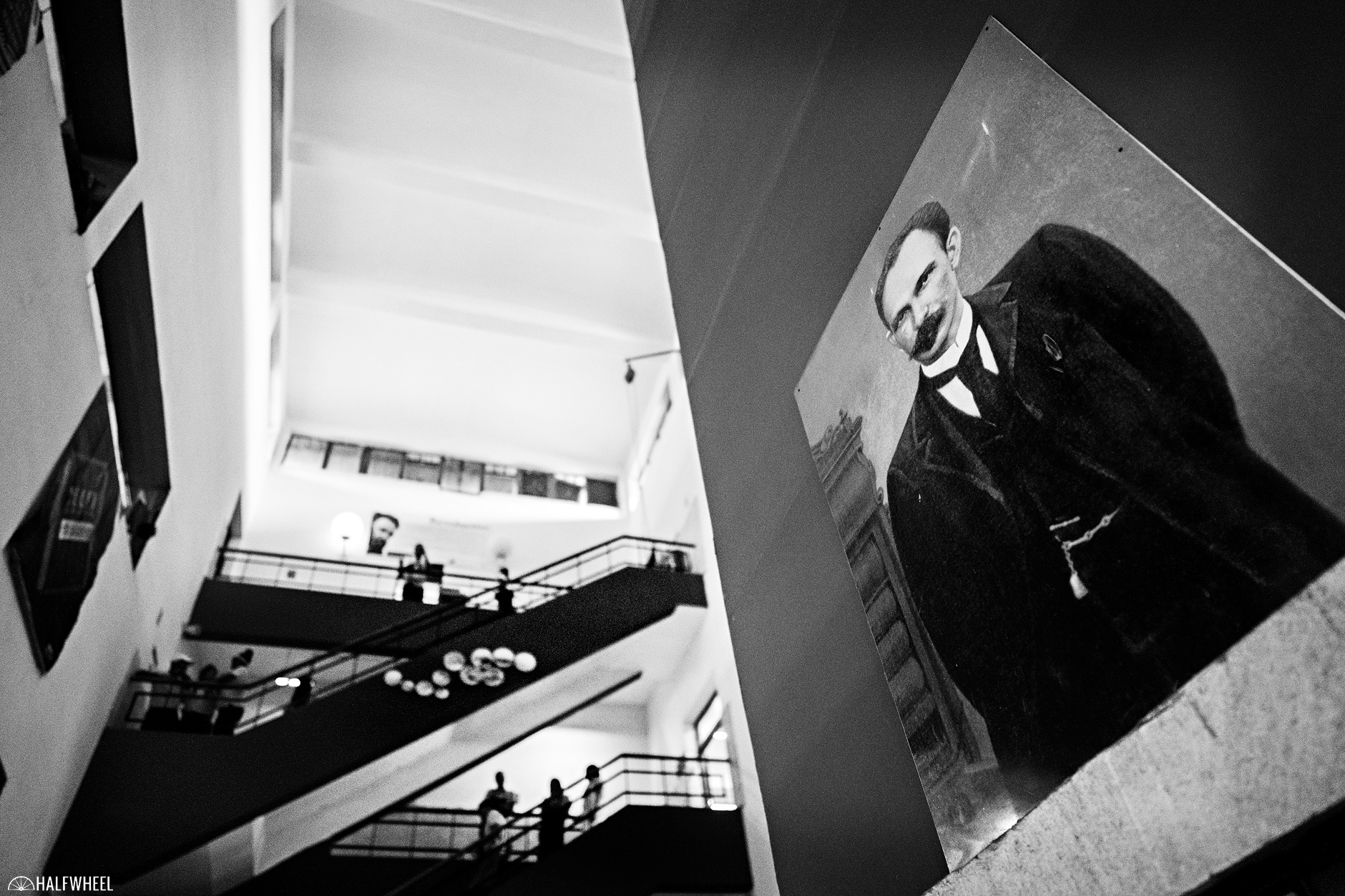
I have visited La Corona twice before as part of the Festival Del Habanos activities—and once on my own—so walking into the atrium was liking visiting an old friend, albeit one made of concrete. The large portrait of José Martí still adorns the wall, while the workers continue to hang out in various places while they smoke cigarettes, including on the stairs, in the hallways and just about everywhere in-between.
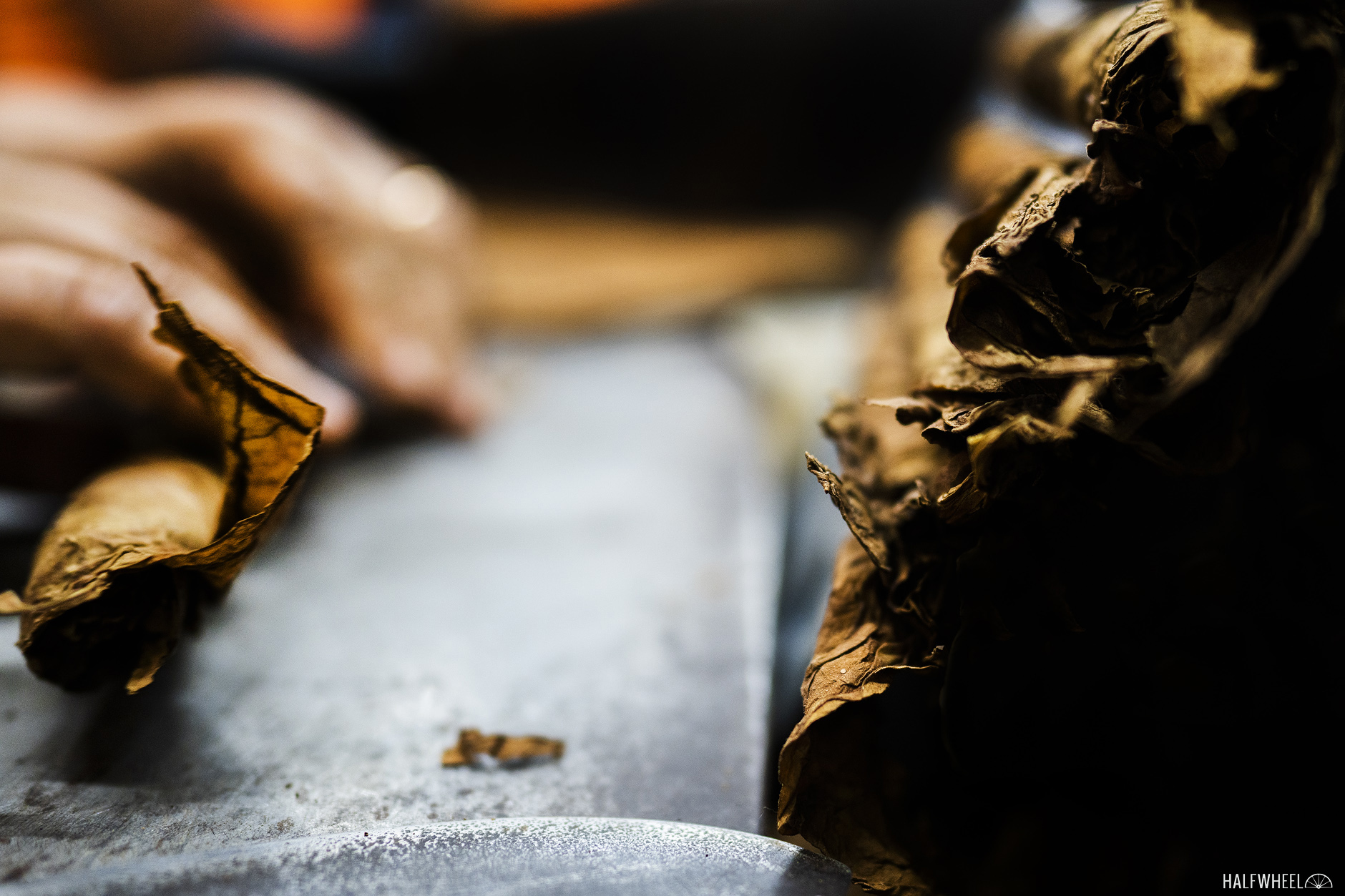
Our group was formed and handed off to a guide, who implored everyone to stick together when walking around, advice that I promptly ignored as I walked the opposite way as everyone else. This is fairly standard practice on my part when photographing factories—when I can get away with it—since it is virtually impossible to get anything resembling natural expressions or uncluttered backgrounds when there are 20 other people wandering around in the same area.
Unsurprisingly, the basic layout of the factory had not changed: with each of the three floors are laid out in a square U pattern with the stairway and an elevator in the middle and rollers or other workers positioned in the spaces around them.
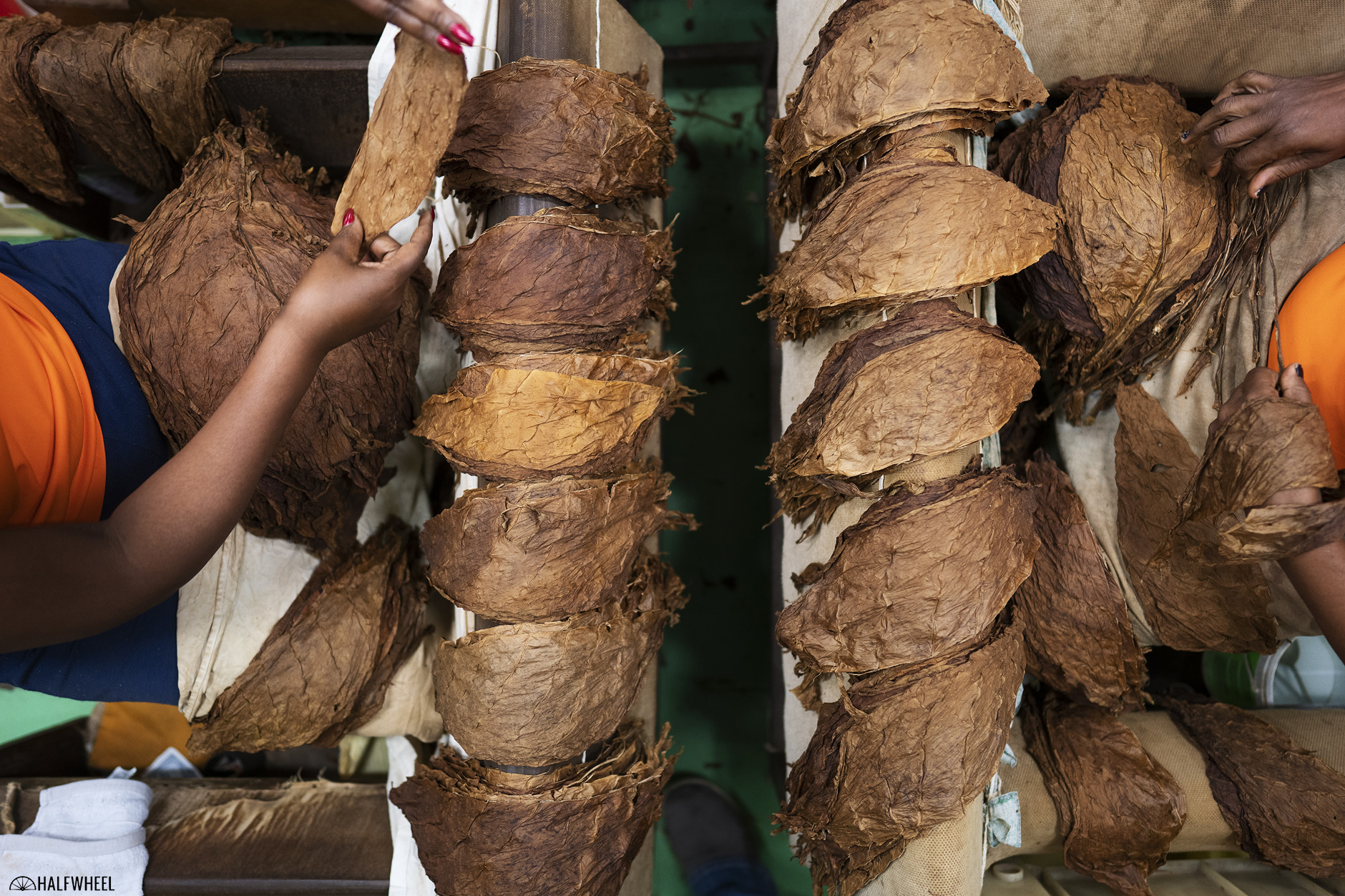
My first stop was where wrappers were being stripped and categorized by pairs of workers facing each other, a process I have always found fascinating, Viewed from above, the process is almost like a dance and it is easy to take too many photos trying to get exactly what I was looking for, especially considering how fast most of the people are able to accomplish their task.
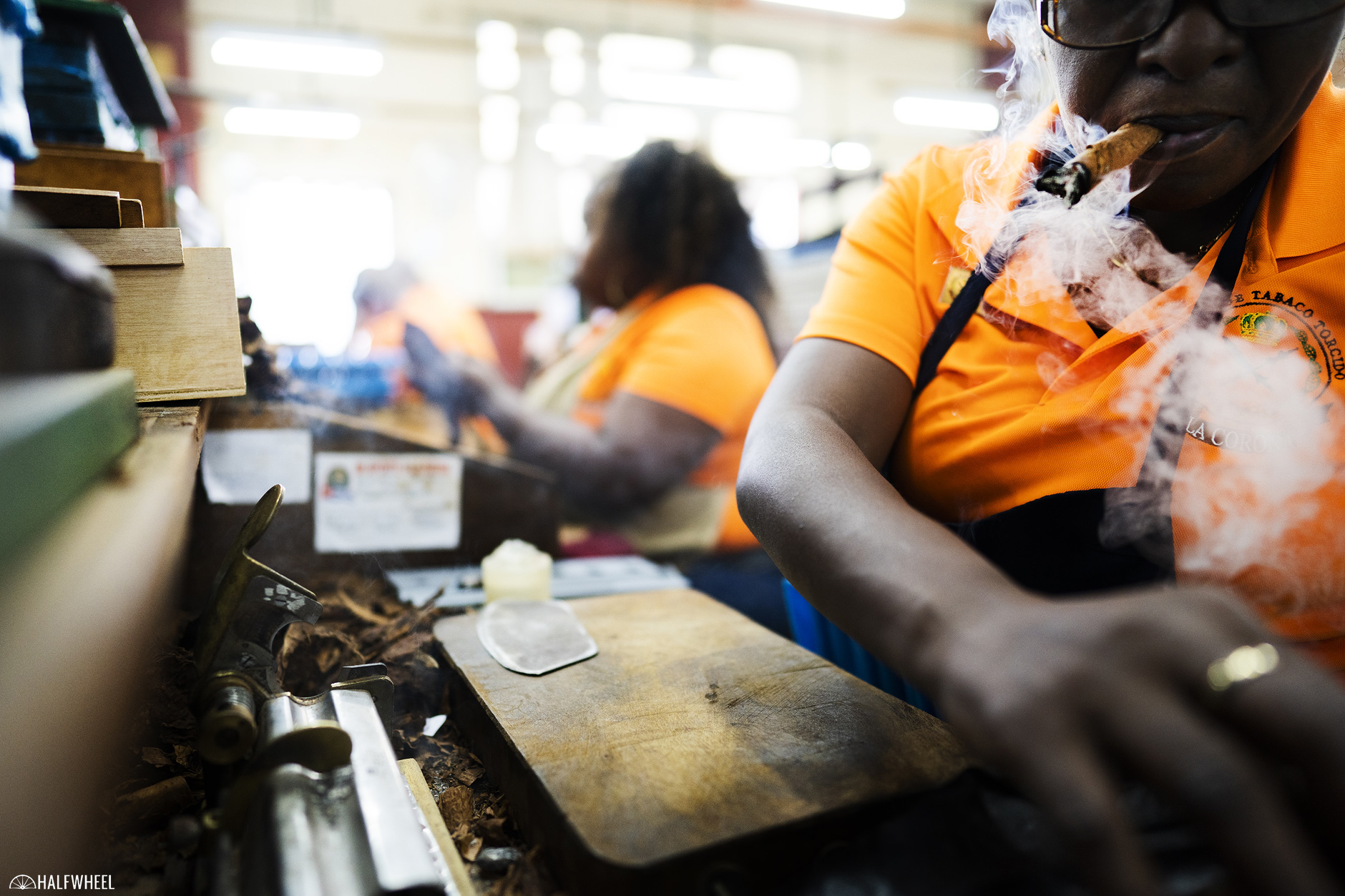
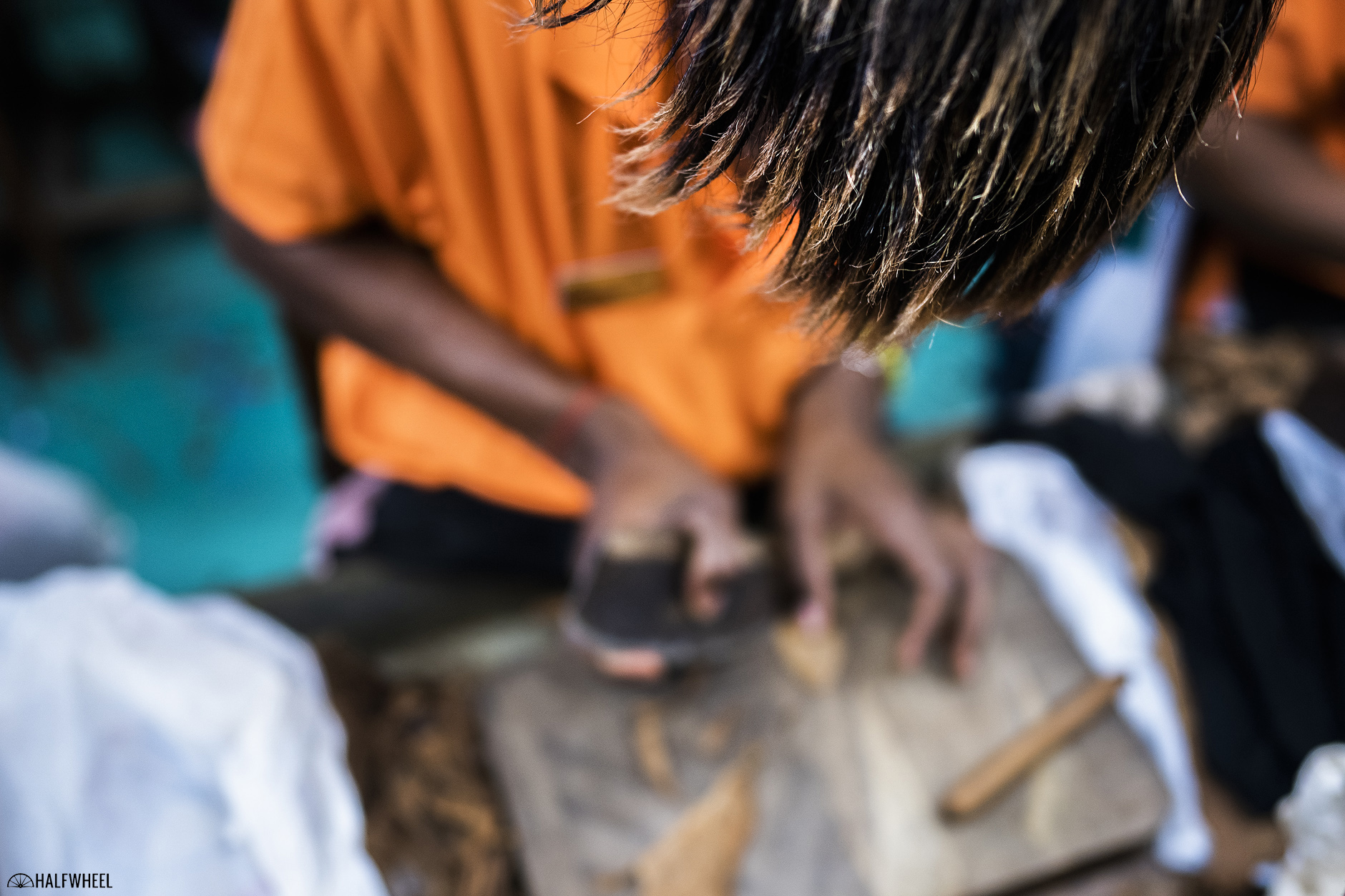
Next up was the rolling room, full of a massive collection of rolling tables that stretches quite a ways from one end of the building to the other. There seemed to be fewer people working at that moment then I have seen in the past, so instead of shooting photos of a bunch of empty tables, I decided to concentrate on specific people who interested me, including a woman who was puffing on a hand-rolled stick while she worked and a man with very interesting hair, especially when viewed up close.
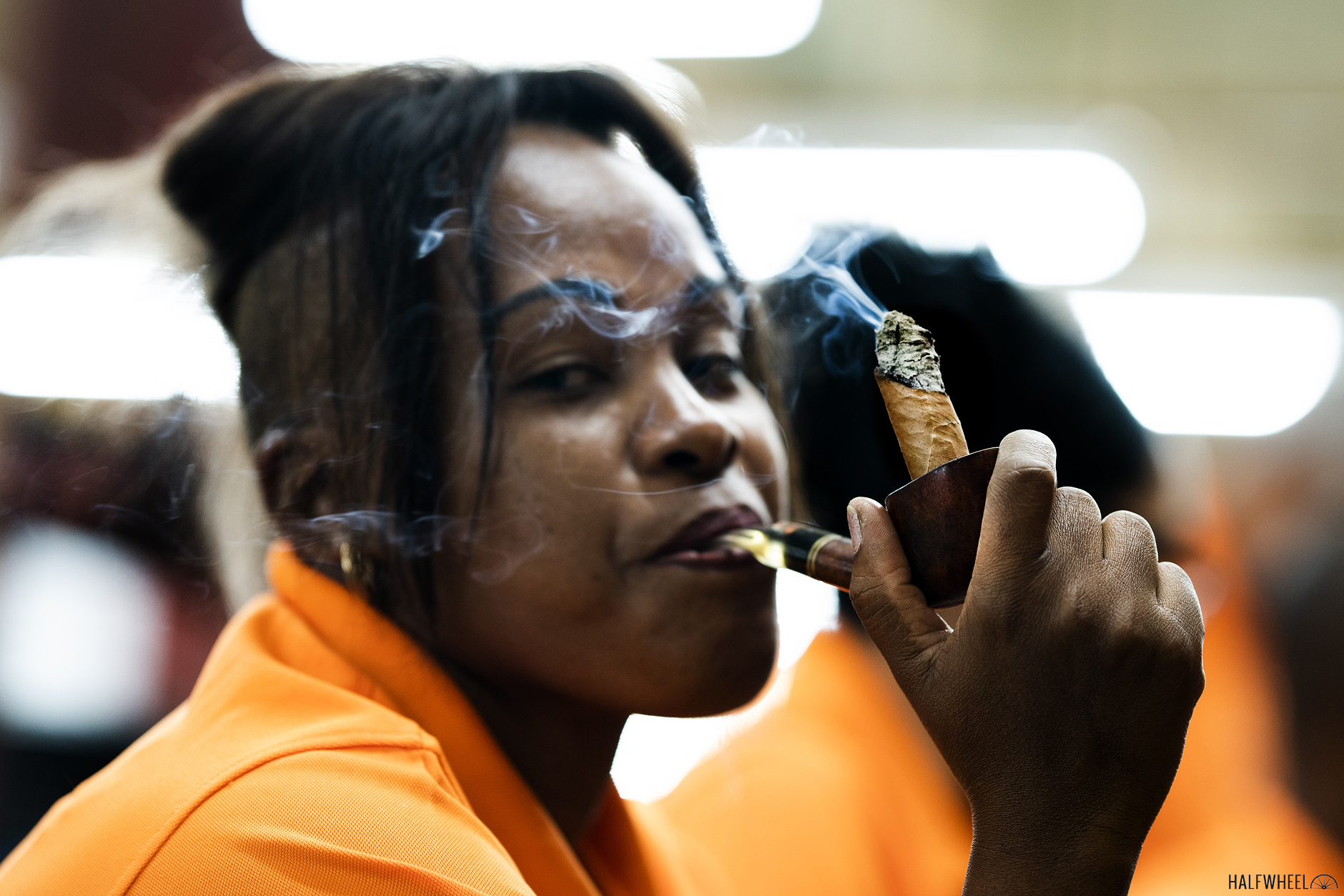
I had been told by one of the other people in the group that there was a roller who was smoking a cigar nub inside of a pipe, and when I ran across her I ended up photographing various angles for a bit before moving on, never quite getting what I wanted. Thankfully, Charlie saw something he liked and ended up getting a great photograph with a longer lens.

By that time, everyone was pretty much ready to leave for the next factory, but I wanted to get an overall photograph that showed a bit of a different angle, so I hung back a bit until I found what I was looking for: two portraits on the wall of Che Guevara and Camilo Cienfuegos seemingly watching over every move the rollers make.
From La Corona, we took taxis to the second factory, which happened to be one I had never visited before: the Partagás Factory.
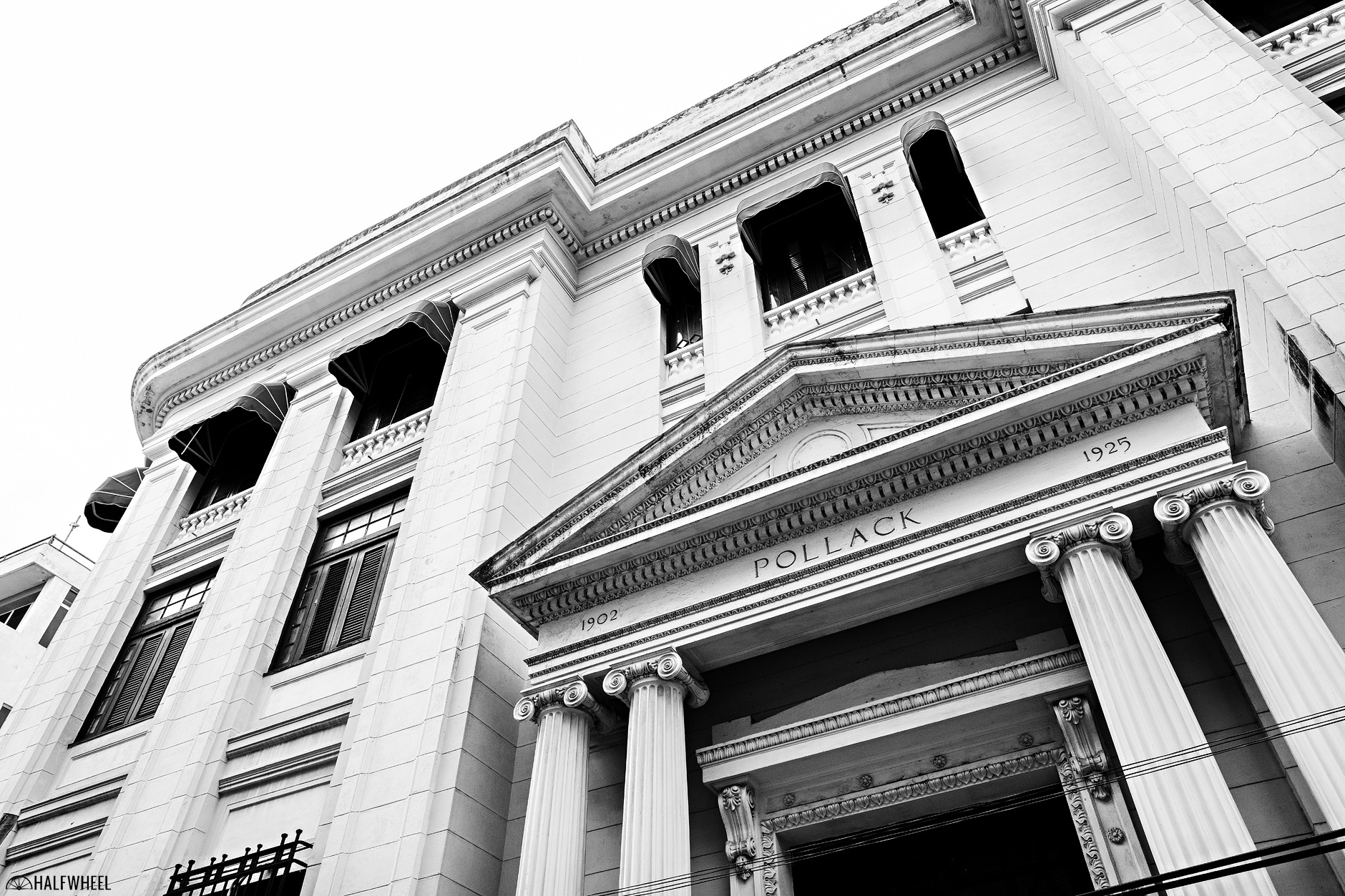
As with La Corona, the Partagás factory has occupied multiple buildings since it was founded, with the most recent location found in central Havana on the corner of Calle San Carlos. As we pulled up in the taxi, I was a bit surprised at the stucco façade and columns that reminded me vaguely of a bank building.
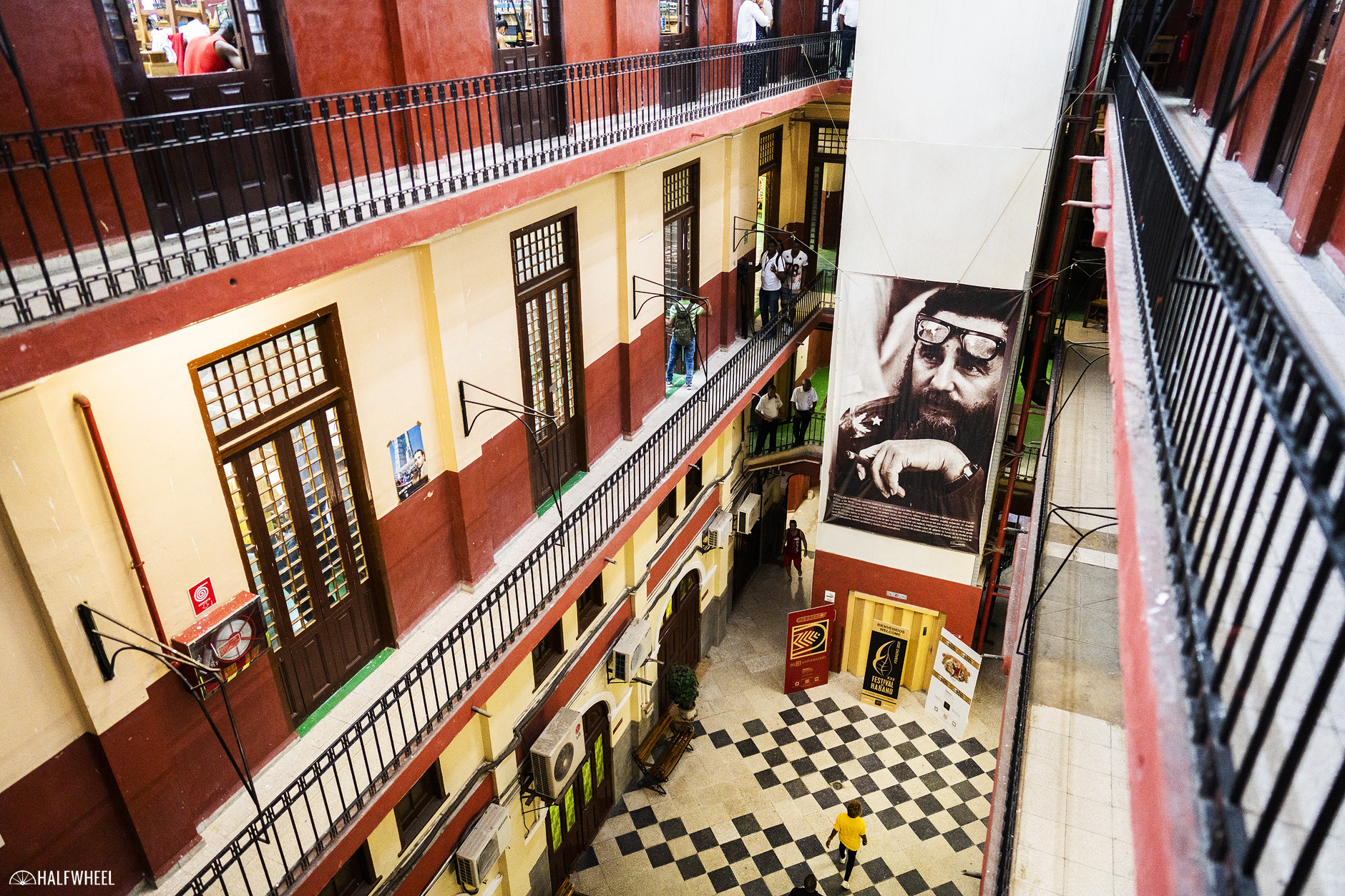
After entering the massive front door, you run right into a four-story atrium with an elevator in the middle and a huge portrait of an older Fidel Castro overlooking everything in sight.
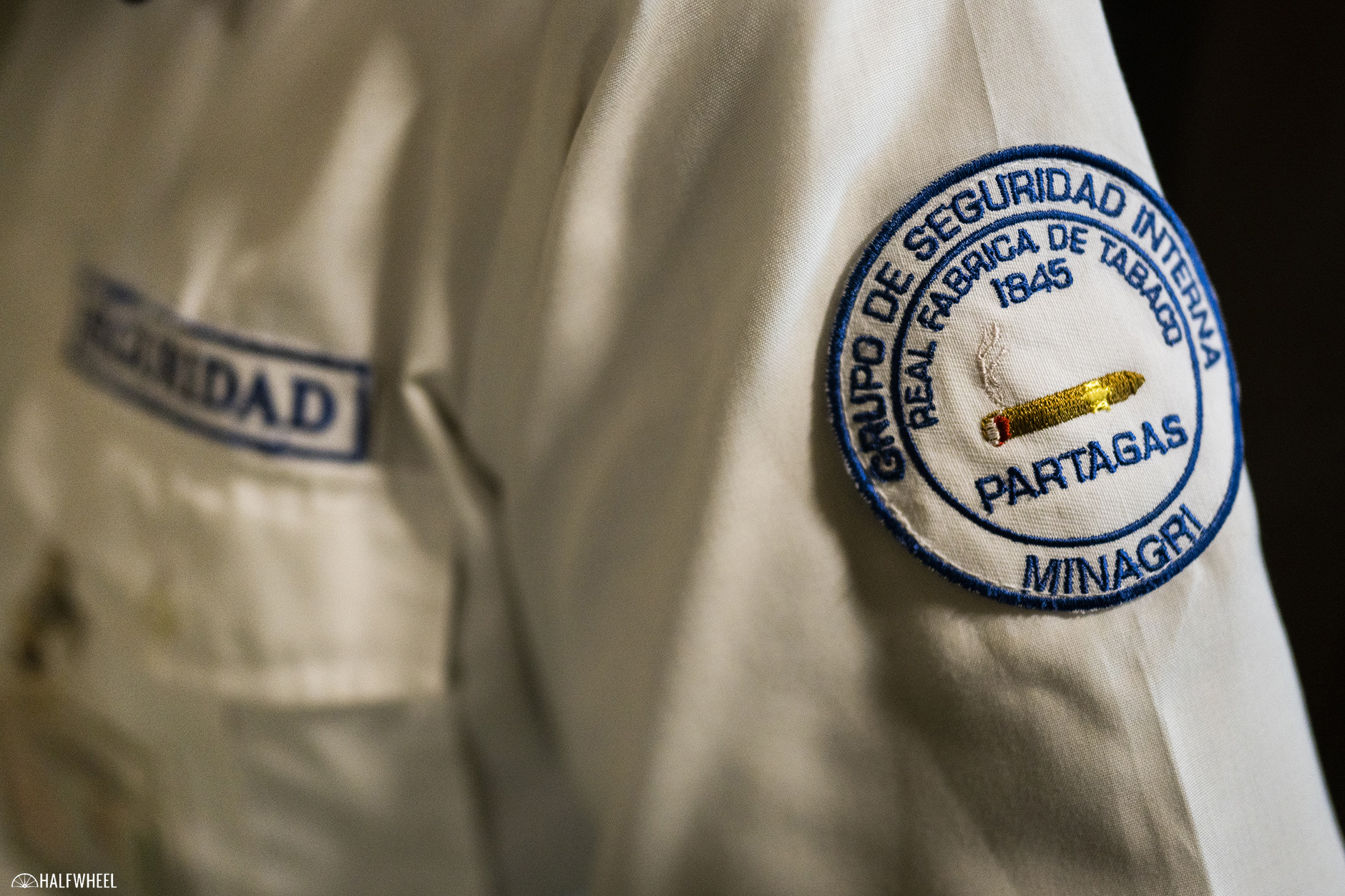
Once again, I went off on my own, but quickly realized that there was at least one major difference between this factory and La Corona, especially in the number of guards that were present. In fact, there was a guard stationed at just about every junction, each with a Partagás branded logo on their shirt.

While this made wandering around more difficult—albeit not impossible—it also made for some interesting photographs that were not possible at the last factory, especially when the large Castro portrait was integrated into the shot.
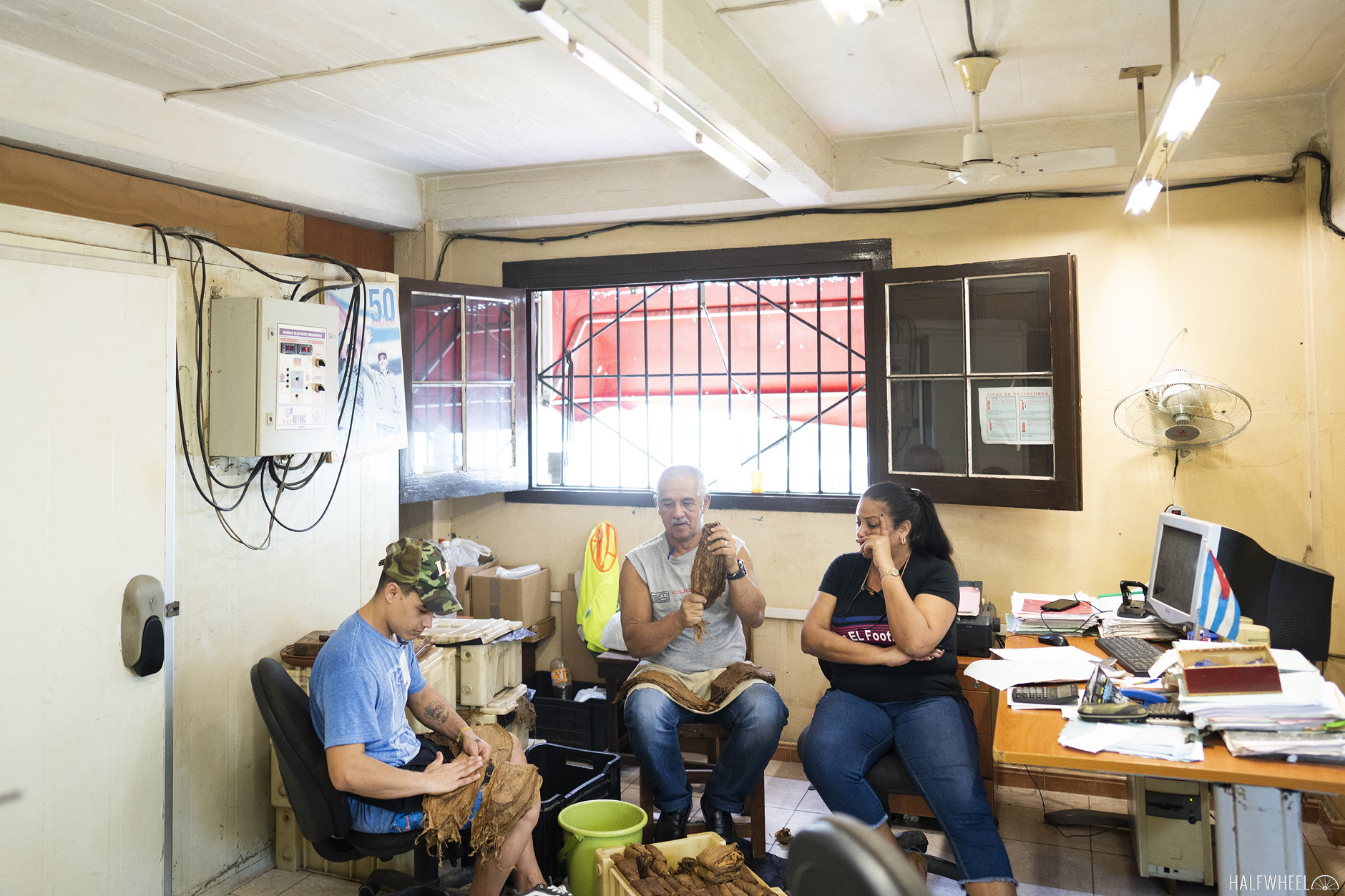
As I entered the stripping area, I realized that there were workers situated everywhere around the room, including next to some administrative desks, although I could not find out if it was due to space issues or if the people just wanted to talk to each other while working.
There seemed to be more rollers working at this factory than at La Corona, although the workers at Partagás did not have matching shirts that I could tell. As I wandered slowly through the rolling room, I was able to get fairly close to the action, but did not stay in one place too long in an attempt to not become more of an annoyance than I already was.
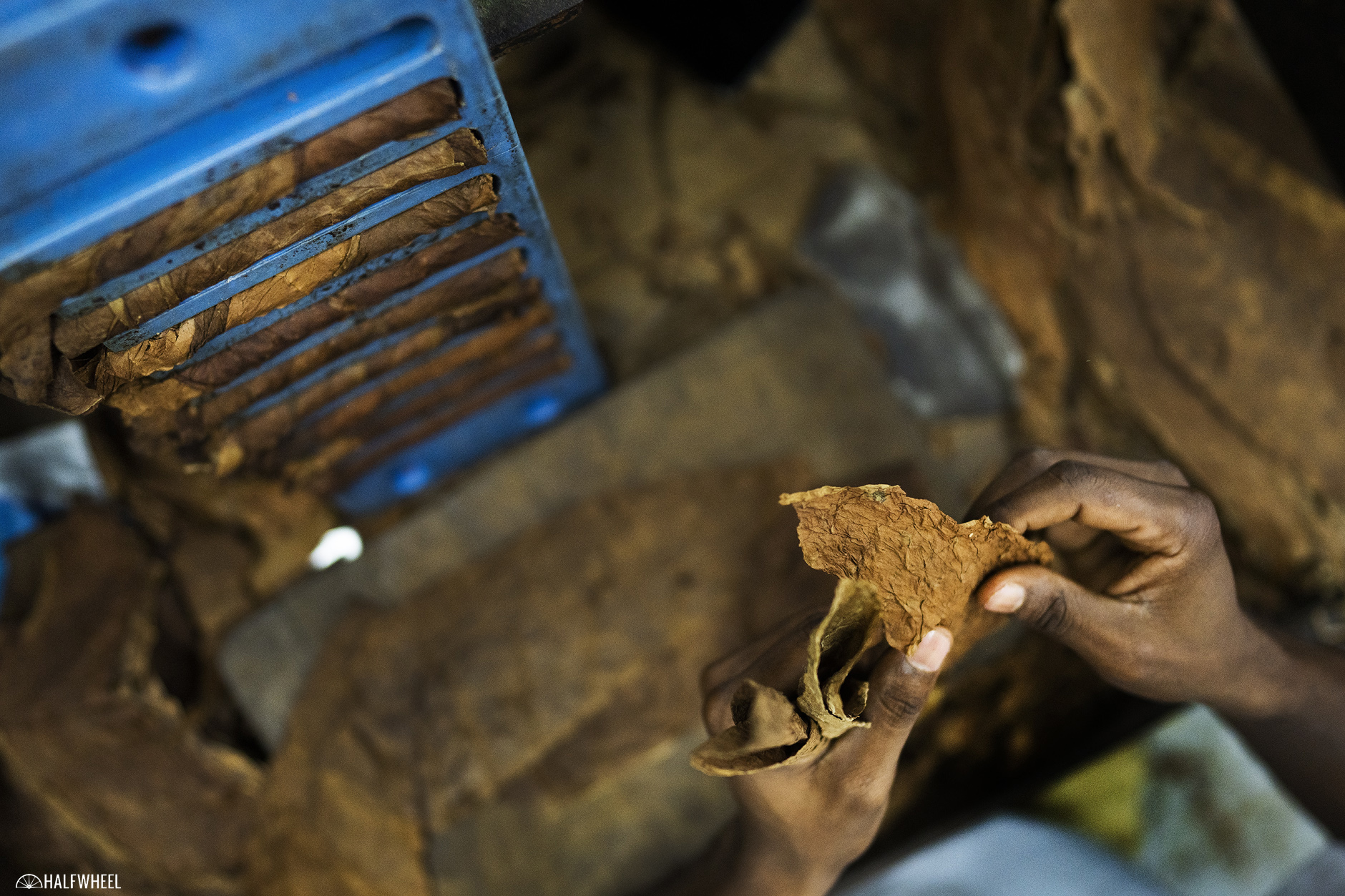
Unfortunately, the stripping area and rolling rooms were pretty much the only sections of the factory where I was allowed to visit—I was turned away from quite a few doors—and as a result, I did not spend more than about an hour photographing before it was time to leave.
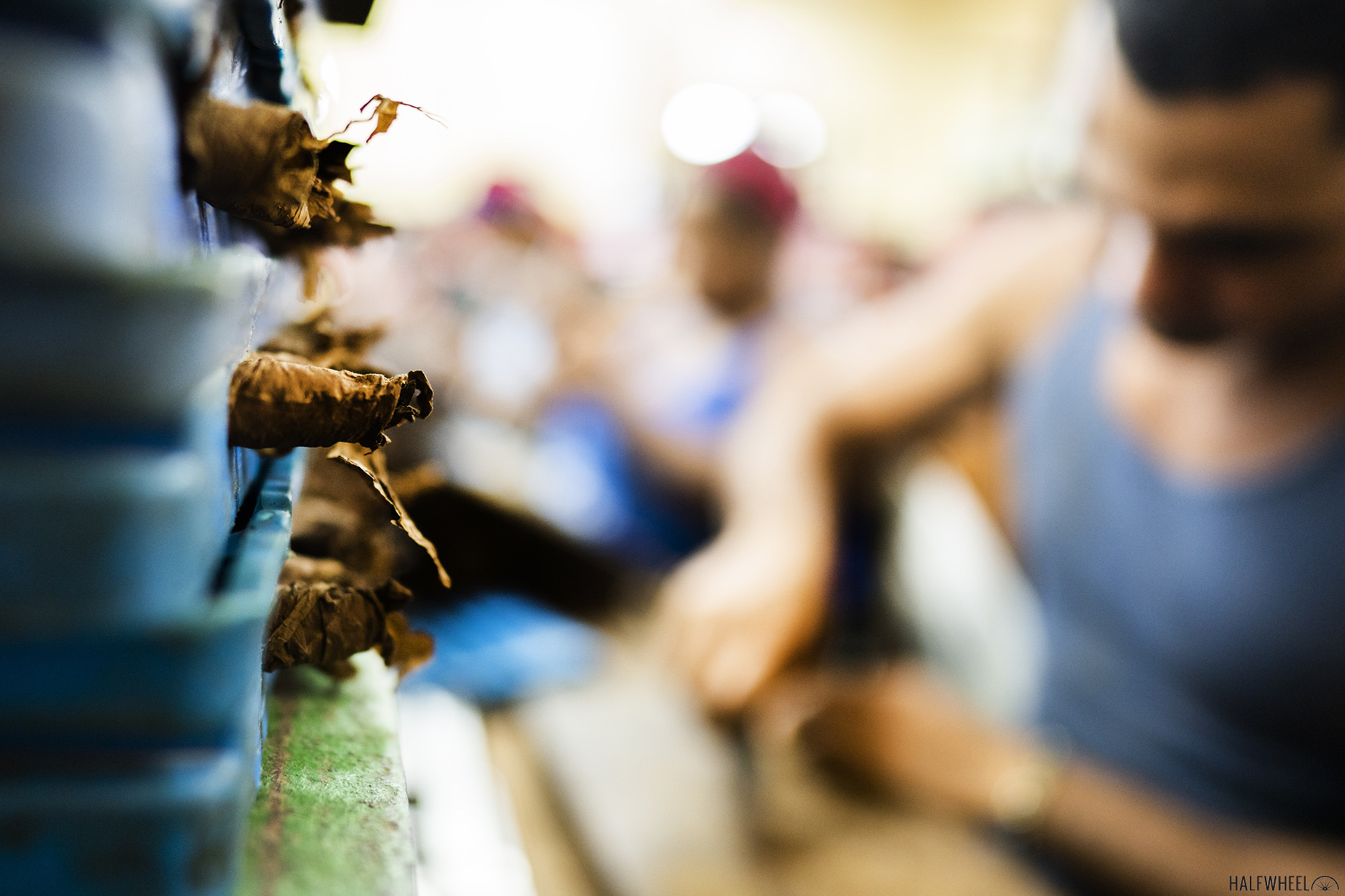
After a quick working lunch, Charlie and I decided to stop by a party we had been invited to by the guys behind Dublin, Ireland-based retailer J. J. Fox. While the retailer has put on a party for friends and clients every year as far back as I can remember, this year held an additional purpose, as the team was also celebrating the formation of a new auction platform named Bond Roberts, being done in collaboration with Friends of Habanos, an online forum and store based in Australia.
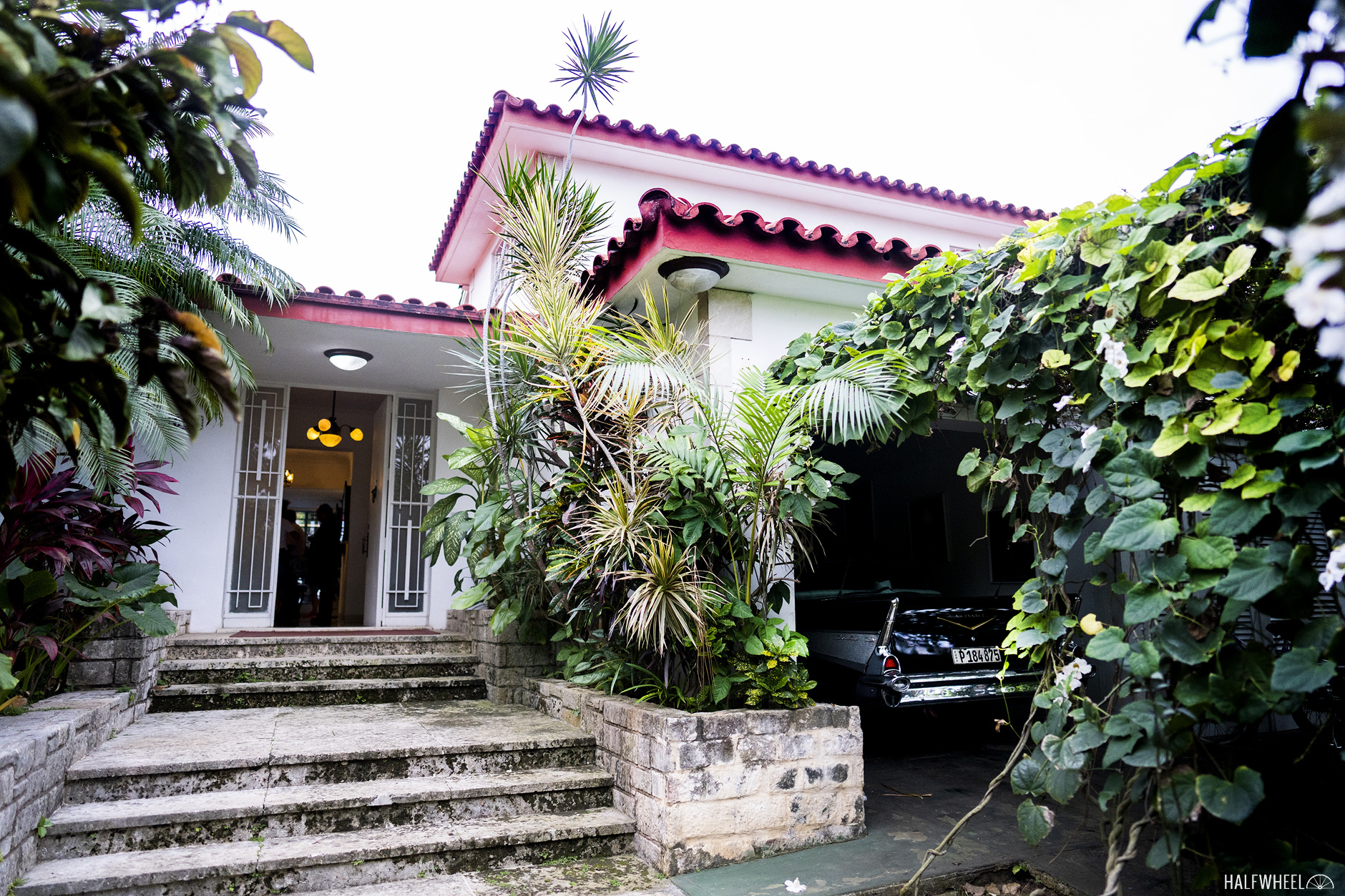
The party was being held in a rented house that featured not only a pool and band, but also an open bar, a choice of cigars and even pours of Havana Club Union, a joint effort between Havana Club’s Maestro Roñero Asbel Morales and Cohiba Cigars sommelier Fernando Fernandez Milian that was released in 2017.
From the party, Charlie and I made our way back to the Casa Particular, where I immediately started getting ready for my final event of the night: a media dinner put on by both Zenith and Habanos S.A. in order to show off the brand new Elite Moonphase inspired by the Romeo Y Julieta marca.
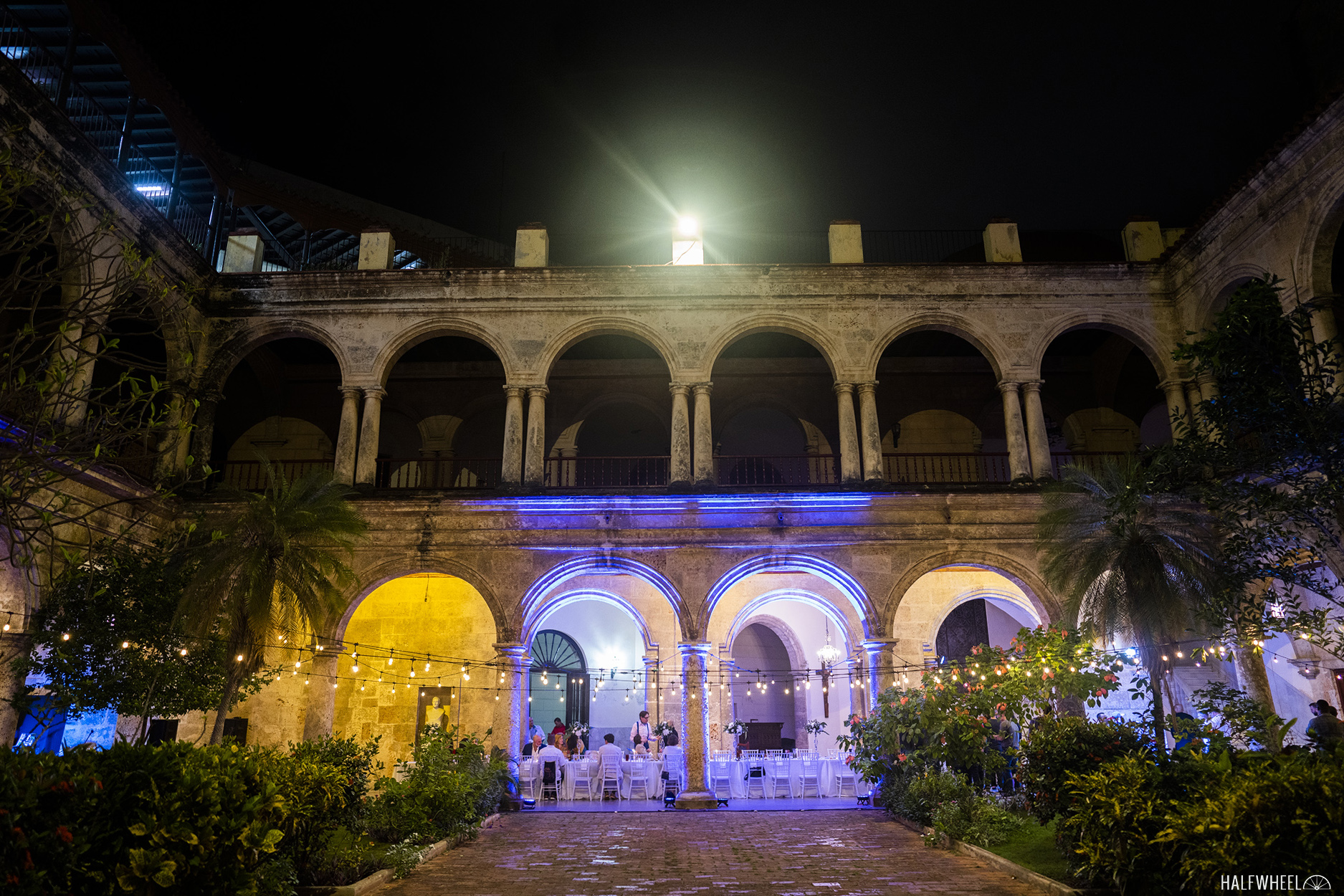
Held in the courtyard of the Félix Varela Cultural Center, the dinner was hosted by Julien Tornare, ceo of Zenith, and Jose María López, Habanos S.A. vp of development.

Attendees were shown not only the two new watches, but also boxes of the new Romeo y Julieta Linea Oro.


After a wonderful dinner that also included drinks, cigars and some great discussions, it was time to hop a taxi back to the Casa Particular and try to get a bit of sleep before the final day of events started.

